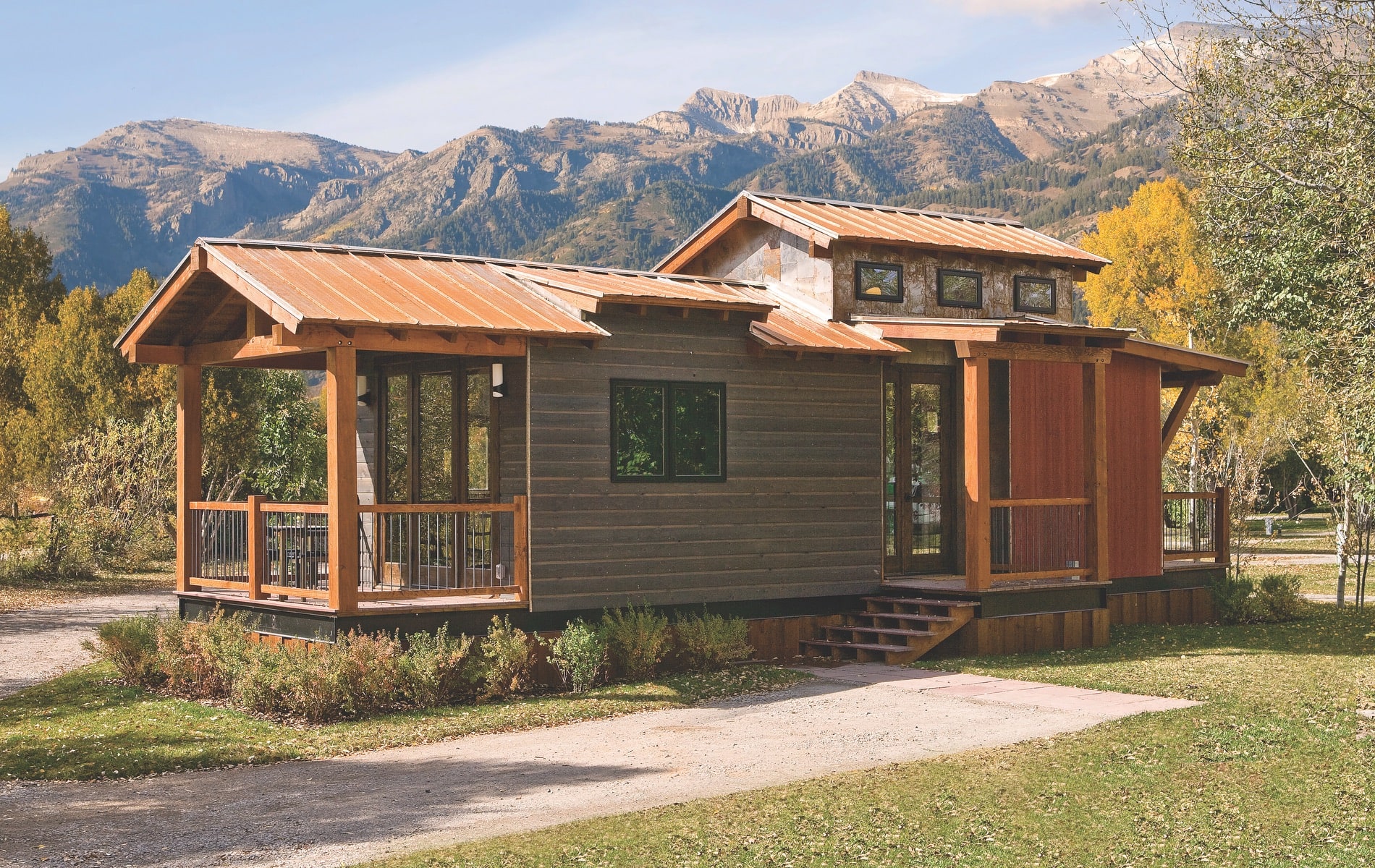
VIE_Magazine_MAY23_article_Wheelhaus_Tiny_Homes_HERO-min
Small Homes, Big Appeal
Wheelhaus Redefines the Modern Tiny Home
By Emme Martin | Photography courtesy of Wheelhaus
Tiny homes have taken the housing industry by storm in recent years, providing an affordable and environmentally friendly alternative to traditional abodes. With housing costs skyrocketing across America, many people are turning to the minimalist lifestyle of tiny houses. But what exactly are tiny homes, and why are they becoming so popular? We spoke to Jamie Mackay, the founder and CEO of Wheelhaus, a leading tiny home company, to get the answers.
According to Mackay, a tiny home is a fully functional dwelling typically ranging from one hundred to four hundred square feet. These homes are designed to make the most of every inch of space with clever storage solutions and multifunctional furniture. Despite their size, tiny homes can be equipped with all the amenities of a traditional home, including full kitchens, bathrooms, and laundry facilities.
One of the main draws of tiny homes is their affordability. Mackay notes that a typical tiny house can range from $30,000 to $150,000, depending on size, location, and materials. This is significantly less than the cost of a traditional home, which can easily reach high six or even seven figures in many areas of the country.
Another benefit of tiny homes is their environmental sustainability. These homes are often built with eco-friendly materials and designed to be energy-efficient, with features such as solar panels and composting toilets. As a result, a tiny home can be an attractive option for those looking to minimize their carbon footprint.
But what is it like to actually live in a tiny home? Mackay says that while there can be an adjustment period, many people find the experience liberating. “Living in a tiny home forces you to simplify your life and focus on what really matters,” he explains. “You learn to let go of material possessions and prioritize experiences and relationships.”
Tiny homes offer a simpler, more sustainable way of living that is increasingly attractive in today’s fast-paced world.
As the founder of Wheelhaus, Mackay has seen firsthand the growth of the tiny home movement. His company specializes in building luxury tiny homes that work with the owners’ high-end lifestyles while remaining efficient. Each Wheelhaus model is thoughtfully designed with a unique aesthetic and range of features, from rustic cabins to sleek modern designs. While the units are not fully custom-built, customers can choose from various floor plans and finishes to make their tiny homes feel like their own.
“We believe that luxury and sustainability don’t have to be mutually exclusive,” Mackay says. “Our homes are built to last and designed to be beautiful and functional.” Wheelhaus homes are built in a factory and then transported to the final site, making the process faster and more efficient than traditional on-site construction.
Mackay believes the popularity of tiny homes will only grow in the coming years. “People are realizing that they don’t need a lot of space to be happy,” he says. “Tiny homes offer a simpler, more sustainable way of living that is increasingly attractive in today’s fast-paced world.”
Whether you’re looking to downsize, minimize your environmental impact, or live more intentionally, a tiny home could be the perfect solution. With their affordability, sustainability, and clever design, it’s easy to see why these homes have become such a popular choice for people nationwide. And with companies like Wheelhaus leading the way in luxury tiny home design, the possibilities for this exciting new housing trend are endless.
— V —
Visit Wheelhaus.com to learn more and check out the selection of tiny homes.
Share This Story!
KEEP UP WITH THE LATEST STORIES FROM VIE























































































































































